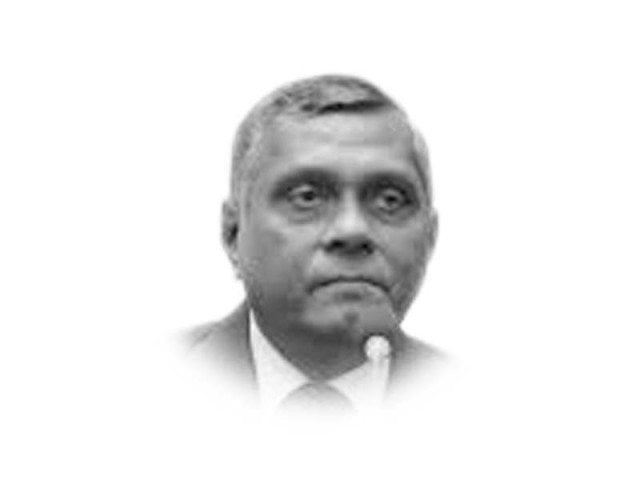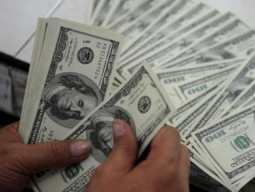
In 1959, President Ayub Khan decided to shift Pakistan’s federal capital from Karachi — first to Rawalpindi and then to the newly-built city of Islamabad. At the time, no one had anticipated that in the future the seat of power will be besieged by demonstrations and protest marches. The Ayub regime blamed Karachi for being over-crowded and a scene of political agitation with an unhealthy climate. However, sixty years down the road, unarmed and armed marches from across the country have emerged in Islamabad to besiege the capital and have their demands accepted. A week ago, federal Interior Minister Sheikh Rasheed Ahmed sarcastically remarked that Islamabad will not be allowed to become a ‘Hyde Park’ where anyone was free to demonstrate and disrupt the normal routine of life.
Did the shift in capital from Karachi to Islamabad deepen the sense of grievance in East Pakistan? Why did the assumption that Islamabad as a federal capital city will be quiet and peaceful prove to be wrong? Should the capital be brought back to Karachi as the experiment to shift the capital has failed?
Critics argue that it was the vested interest of Ayub Khan and his associates to shift the capital from Karachi to Islamabad because they felt more secure and comfortable in the proximity of General Headquarters and were not at ease with the political and commercial characteristics of Karachi. But, by making such a decision they undermined the fact that Karachi was chosen as a federal capital by the Father of the Nation Quaid-e-Azam Mohammad Ali Jinnah. It was acceptable to both East and West Pakistan. Billions of rupees were spent to build the city of Islamabad and thousands of federal government employees were shifted 1,500 kilometres away first to Rawalpindi as an interim capital and then to Islamabad. The shift in capital cities left the Bengali population of East Pakistan embittered and resentful. They often remarked that they could “feel the smell of jute from the roads and buildings of Islamabad” because they claimed that the city was built with their resources.
East Pakistan, despite the geographical distance from West Pakistan, had accepted Karachi as the federal capital because of its diversified and cosmopolitan nature. However, when the regime of Ayub Khan imposed the decision to shift the capital from Karachi to Islamabad, they were unhappy and enraged. Had the then rulers of Pakistan possessed vision and ability to maintain the unity of the country, they should have shifted the capital from Karachi to Dhaka. After all, personal and group interests should not be above national interests. For example, when the regime of Nursultan Nazarbayev of Kazakhstan realised that there was a threat of secession of non-Kazakh Slavic northern part of their country, it decided to shift the capital from Almaty located in the south of Kazakhstan to Astana situated in the northern part of the country. But the Ayub regime was more interested in ruling from the proximity of his seat of power and his hometown Haripur than considering the interests of the whole country.
In September 2019, the speaker of the Sindh Assembly before an accountability court demanded that “Karachi ought to be made the federal capital once again. Karachi was the seat of power of the federal government when Pakistan was created, and the decision must be reversed.” Furthermore, Pir Pagara, the chief of the Pakistan Muslim League (Functional), also advised Federal Law Minister Farough Naseem to bring the federal capital back to Karachi. He argued that “even from the spectre of security, Karachi can become the safest capital of the country”. Yet, even after shifting the federal capital from Karachi to Islamabad, the importance of Karachi has not diminished. It is Pakistan’s largest city and the commercial hub. Karachi contributes 65% of federal revenue but receives merely 15% of the funding from the Centre.
The price of shifting federal capital from Karachi to Islamabad is manifold.
First, billions of rupees were spent on building the capital city. Undoubtedly, the final look was organised and modern. However, sixty years down the road, that look has been compromised because of unplanned construction, pollution and rampant crimes.
Second, shifting federal capital to Islamabad augmented a sense of deprivation amongst East Pakistan. Poverty and hunger loomed large in East Pakistan while the federal capital reflected prosperity and affluence. Having meagre representation in the military and bureaucracy, Bengalese were furious that Islamabad was a symbol of the exploitation of their resources. They never considered Islamabad as the capital of Pakistan.
Third, the highly bureaucratic and elitist characteristics of Islamabad made the larger population feel unrepresented. Besides the Bengalese of East Pakistan, even MQM leaders from urban Sindh began to complain that the greenery and infrastructure of Islamabad were a product of the resources from Karachi. A popular belief emerged that the beneficiaries of the capital city were not the people of Pakistan but a handful of elites who established their comfort zones at the expense of taxpayers’ money.
The argument that the capital should be shifted back to Karachi to save the country from further debacles cannot be ruled out as unpatriotic. Those who have a vested interest in retaining Islamabad as federal capital may vehemently oppose such an idea, but it should be the present and future of the country that must be prioritised.
If Islamabad has become a ‘Hyde Park’ and vulnerable to all sorts of agitation, violence, hooligans, demonstrations, and sit-in, it is because of the lopsided vision of those who shifted the federal capital from Karachi. The first sit-in in Islamabad took place on 4th and 5th of July 1980 when the Shia community protested the imposition of the Zakat and Ushr ordinance. Their demand was accepted, and they were exempted from Zakat and Ushr. From the 1990s onwards Islamabad became a hub of sit-ins and demonstrations by religious and political parties. Islamabad has gained notoriety for frequent sit-ins, blockades, and protest marches, which raises the question: why was the capital shifted from Karachi in the first place?
Published in The Express Tribune, November 7th, 2021.
Like Opinion & Editorial on Facebook, follow @ETOpEd on Twitter to receive all updates on all our daily pieces.
COMMENTS (28)
Comments are moderated and generally will be posted if they are on-topic and not abusive.
For more information, please see our Comments FAQ


1737706680-1/emilia-perez-(2)1737706680-1-165x106.webp)

1736235029-0/diddy-(50)1736235029-0-165x106.webp)














Karachi is only capital and cosmopolitan with diversified people and cultures representing all federating units besides a major source of revenue generation hence it may be resumed as federal capital of Pakistan.